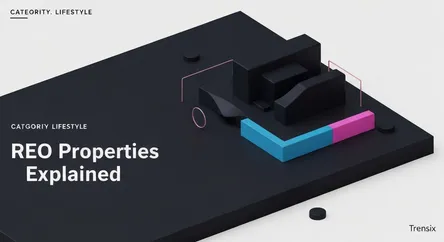Lifestyle
REO Properties Explained

Discover REO (Real Estate Owned) properties—homes owned by a lender after an unsuccessful foreclosure auction. Learn what they are and why they matter.
What is it?
REO stands for "Real Estate Owned" and refers to a property that a lender, such as a bank, has acquired after it failed to sell at a foreclosure auction. When a homeowner defaults on their mortgage, the lender forecloses and attempts to sell the home to recover the loan amount. If the property doesn't sell at auction, the lender takes legal ownership, and it becomes an REO property. These homes are then listed on the market, often through real estate agents who specialize in REO sales.
Why is it trending?
REO properties gain attention, especially during economic shifts when foreclosure rates may increase. Investors and homebuyers are often attracted to them because they can be purchased at a discount compared to other homes in the area. Lenders are not in the business of property management and are highly motivated to sell these assets quickly to minimize their losses. This urgency can create significant buying opportunities for those prepared to navigate a non-traditional purchasing process.
How does it affect people?
For buyers, REO properties can offer a more affordable path to homeownership or a lucrative investment. However, these homes are typically sold "as-is," meaning they may require substantial repairs and renovations at the buyer's expense. The purchase process can also be slower and more bureaucratic than a standard transaction. For neighborhoods, a high concentration of REO properties can sometimes lead to decreased property values and neglect if the homes sit vacant for extended periods.